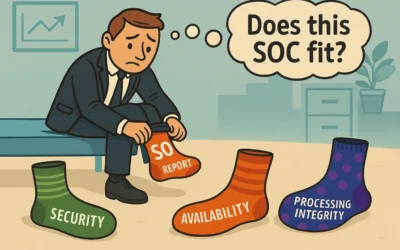In today’s increasingly digital world, the aviation industry is more reliant on technology than ever before. As aviation systems become more connected and dependent on the internet, the risk of cyber threats to airlines and airports has grown significantly. In recognition of this evolving threat landscape, the Transportation Security Administration (TSA) has recently issued a set of new cybersecurity requirements for airports and aircraft. Probably not surprising, the TSA’s latest cybersecurity directives emphasize the importance of penetration testing and continuous security monitoring.
TSA’s New Cybersecurity Requirements
The TSA’s press release, dated March 7, 2023, outlines the key components of their new cybersecurity requirements for the aviation sector. These requirements aim to bolster the cybersecurity posture of airlines and airports to safeguard critical systems and passenger data. Some of the key highlights include:
1. Threat Assessment: Airlines and airports are now required to conduct comprehensive threat assessments to identify potential vulnerabilities and threat actors. This proactive approach helps in understanding the specific risks that an organization may face.
2. Network Security: Enhanced network security measures, including the implementation of intrusion detection systems (IDS) and intrusion prevention systems (IPS), are mandated to detect and mitigate threats in real-time.
3. Security Awareness Training: TSA requires all aviation personnel to undergo cybersecurity awareness training to recognize and respond to potential threats effectively.
4. Incident Response Plans: Airlines and airports must establish and maintain robust incident response plans that outline procedures for reporting, assessing, and responding to cybersecurity incidents.
5. Vendor and Supply Chain Security: Improved vendor and supply chain security is encouraged to ensure that third-party components do not introduce vulnerabilities into an organization’s systems.
6. Cybersecurity Audits: Frequent cybersecurity audits are to be conducted to evaluate the effectiveness of security measures and identify areas for improvement.
Importance of Penetration Testing
Penetration testing, also known as pentesting, is a crucial component of the TSA’s new cybersecurity requirements. It involves simulated cyberattacks on an organization’s systems to evaluate their security posture and identify vulnerabilities. The importance of penetration testing can be summarized as follows:
1. Identifying Vulnerabilities: Penetration testing helps organizations pinpoint weaknesses in their systems that may otherwise go undetected. By simulating real-world attacks, vulnerabilities can be discovered and addressed before malicious actors exploit them.
2. Control Testing & Validation: Pentesting mimics the tactics, techniques, and procedures used by cybercriminals, providing organizations with a realistic assessment of their security defenses.
3. Risk Mitigation: By proactively addressing vulnerabilities, penetration testing reduces the risk of successful cyberattacks, safeguarding sensitive information and critical systems.
4. Compliance: Many regulatory frameworks, including the TSA’s new cybersecurity requirements, mandate regular penetration testing as a part of security best practices.
Continuous Security Monitoring
In the ever-evolving landscape of cybersecurity threats, continuous security monitoring is vital. This practice involves the constant surveillance of an organization’s network and systems to detect and respond to potential threats in real-time. The significance of continuous security monitoring includes:
1. Rapid Threat Detection: Continual monitoring allows for the immediate detection of suspicious activities or anomalies, minimizing the time cyber threats can go undetected.
2. Incident Response: With continuous monitoring in place, organizations can respond swiftly to incidents, reducing potential damage and recovery time.
3. Compliance Adherence: Many regulatory requirements, including the TSA’s, mandate continuous security monitoring to ensure organizations remain in compliance with evolving security standards.
4. Adaptive Security: The ever-changing threat landscape demands a dynamic and adaptive security approach. Continuous monitoring enables organizations to adapt and respond to new threats as they emerge.
tldr;
The TSA’s new cybersecurity requirements for airlines and airports underscore the critical importance of staying ahead of the evolving threat landscape. Penetration testing and continuous attack surface management play pivotal roles in ensuring the safety and security of aviation systems and passengers.
In a world where the aviation industry is more interconnected and dependent on technology than ever before, organizations must embrace these practices to proactively identify vulnerabilities, respond to threats, and safeguard their critical systems. Compliance with these requirements is not just about adhering to regulations; it’s about preserving the trust and safety of the flying public. Penetration testing and continuous security monitoring are not just checkboxes on a list; they are the keys to a safer, more secure aviation industry in the digital age.


